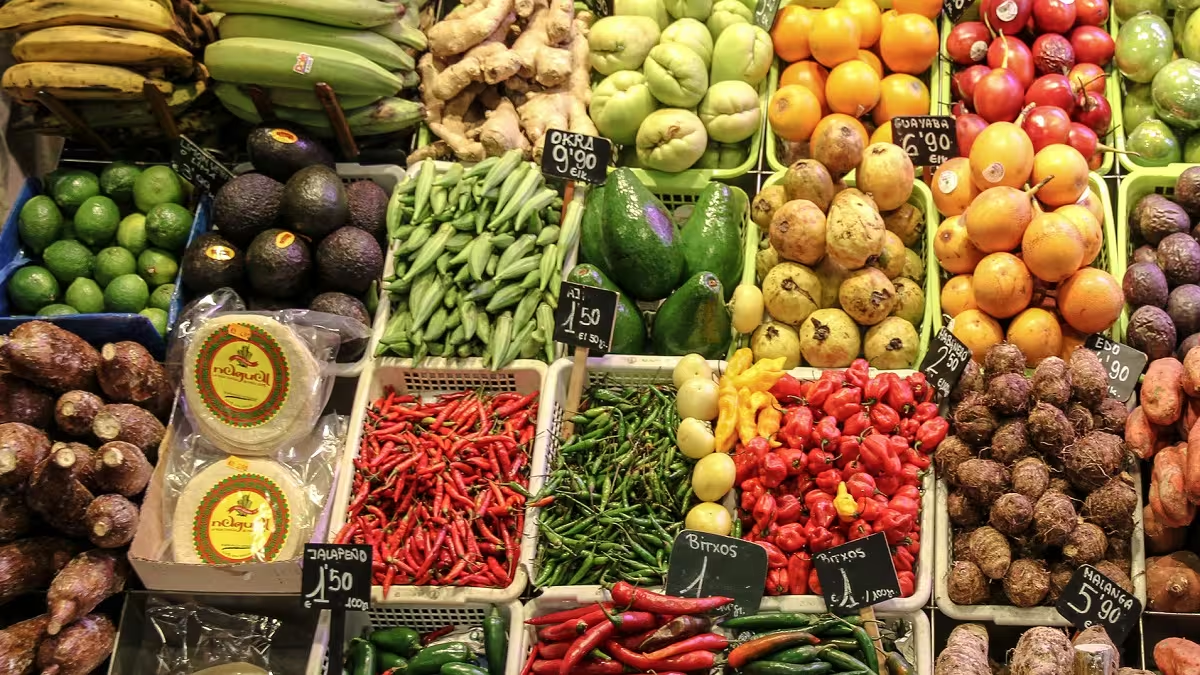Key Insights:
Climatic Events Driving Price Volatility: Extreme weather like heatwaves and floods disrupt vegetable production, causing price instability.
Increased Food Inflation: Rising vegetable prices, especially tomatoes and onions, drive up food inflation and affect the CPI.
Supply-Demand Imbalance: Climatic disruptions cause supply shortages, raising prices and hurting low-income households.
Mitigation Strategies: Solutions include climate-resilient crops, better storage, and market interventions to stabilize prices.
Buzzplus Bureau, Jan 31: In recent times, Indian consumers have faced significant challenges due to rising prices of essential vegetables like tomatoes, onions, and potatoes. These price hikes have been primarily driven by climatic factors, leading to supply disruptions and increased food inflation. This article delves into the causes behind these price increases and explores potential mitigation measures.
Climatic Factors Influencing Vegetable Prices
Vegetable prices in India are highly sensitive to fluctuations in weather patterns, with various climatic factors significantly impacting the supply and production of key vegetables. Over the past few years, India has witnessed a sharp rise in extreme weather events such as heatwaves, unseasonal rainfall, cyclones, floods, and droughts. These weather anomalies disrupt crop yields and affect the quality of vegetables, leading to price volatility.
For instance, the India Meteorological Department (IMD) reported that heatwaves occurred on 18% of the days in recent years, a substantial increase from just 5% in 2020 and 2021. This rise in heatwave frequency directly influences the growing conditions for heat-sensitive crops like tomatoes, onions, and potatoes. The excessive heat not only reduces crop yields but also affects the growth cycle, often leading to delayed harvests or early spoilage of crops.
Unseasonal rainfall, too, has been a major contributor to the volatility in vegetable prices. The Centre for Science and Environment (CSE) and Down to Earth (DTE) have highlighted that the total crop area damaged in 2024 was significantly higher compared to the previous two years, largely due to unseasonal rainfall patterns that led to waterlogging, flooding, and damage to crops. This has been particularly problematic in major vegetable-producing states, which are crucial to meeting the domestic demand for vegetables.
Such climatic factors not only reduce the quantity and quality of vegetables but also create a supply-demand imbalance in the market. When production is hindered, the prices of vegetables surge, directly affecting consumers, particularly the lower-income segments of the population. Therefore, the increasing frequency of extreme weather events is a key driver of price volatility in India’s vegetable market, making it essential for policymakers and agricultural stakeholders to address these challenges effectively.
Impact on Food Inflation
The sharp rise in vegetable prices has had a profound effect on food inflation in India, one of the country’s most pressing economic concerns. According to the Economic Survey 2024-25, the average food inflation rate during the first three quarters of the financial year 2024-25 was recorded at 6.5%. This figure represents a significant increase, with vegetables like tomatoes and onions playing a central role in driving this inflationary surge. The prices of these staple vegetables have been particularly volatile, exacerbating food inflation, which in turn impacts the broader economy.
Vegetables, especially tomatoes and onions, are essential ingredients in the Indian diet, and their price hikes directly influence the cost of living for millions of households. As the prices of these vegetables rise, the cost of preparing everyday meals becomes more expensive, particularly for lower-income families. Since these vegetables are not only key to daily cooking but also a significant part of the Consumer Price Index (CPI) basket, their price fluctuations have a direct and substantial impact on the overall CPI. The CPI, which is a primary indicator of inflation, measures the average change in prices paid by consumers for goods and services, and a rise in food prices inevitably leads to a higher CPI.
This escalation in food prices undermines the purchasing power of consumers, particularly affecting those in the lower economic strata, where food is a large portion of their spending. The surge in food inflation puts additional pressure on household budgets, leading to decreased disposable income and overall economic well-being.
The volatility in vegetable prices underlines the urgent need for effective strategies to stabilize food inflation in India. This could involve improving agricultural practices, enhancing supply chain efficiency, and mitigating the impact of extreme weather events. Without such measures, the instability in food prices will continue to be a key factor influencing broader inflationary trends and economic stability.
Mitigation Measures
To address the challenges posed by climatic factors on vegetable prices, several mitigation strategies can be considered:
- Enhancing Agricultural Resilience: Developing and promoting the use of climate-resilient crop varieties can help mitigate the impact of extreme weather events. Investing in research and development to create drought-resistant and heat-tolerant varieties can ensure more stable yields.
- Improving Storage and Supply Chain Infrastructure: Enhancing cold storage facilities and transportation networks can reduce post-harvest losses and ensure a steady supply of vegetables throughout the year. This infrastructure improvement can help maintain price stability by preventing shortages during off-season periods.
- Implementing Effective Market Interventions: The government can utilize the Price Stabilization Fund to undertake market interventions aimed at controlling price volatility. This includes releasing stocks from reserves during shortages and imposing stock limits to prevent hoarding.
- Strengthening Early Warning Systems: Establishing robust early warning systems can provide timely information about adverse weather conditions, allowing farmers to take preventive measures. This proactive approach can help in planning and reducing the impact of unexpected weather events on crop production.
- Promoting Sustainable Agricultural Practices: Encouraging sustainable farming practices, such as crop diversification and organic farming, can enhance soil health and reduce dependency on chemical inputs. These practices can improve the resilience of crops to climatic stresses and contribute to long-term food security.
The rising prices of essential vegetables in India are a multifaceted issue influenced by climatic factors, supply chain inefficiencies, and market dynamics. Addressing this challenge requires a comprehensive approach that includes enhancing agricultural resilience, improving infrastructure, implementing effective market interventions, strengthening early warning systems, and promoting sustainable farming practices. By adopting these strategies, India can work towards stabilizing vegetable prices and ensuring food security for its population.




